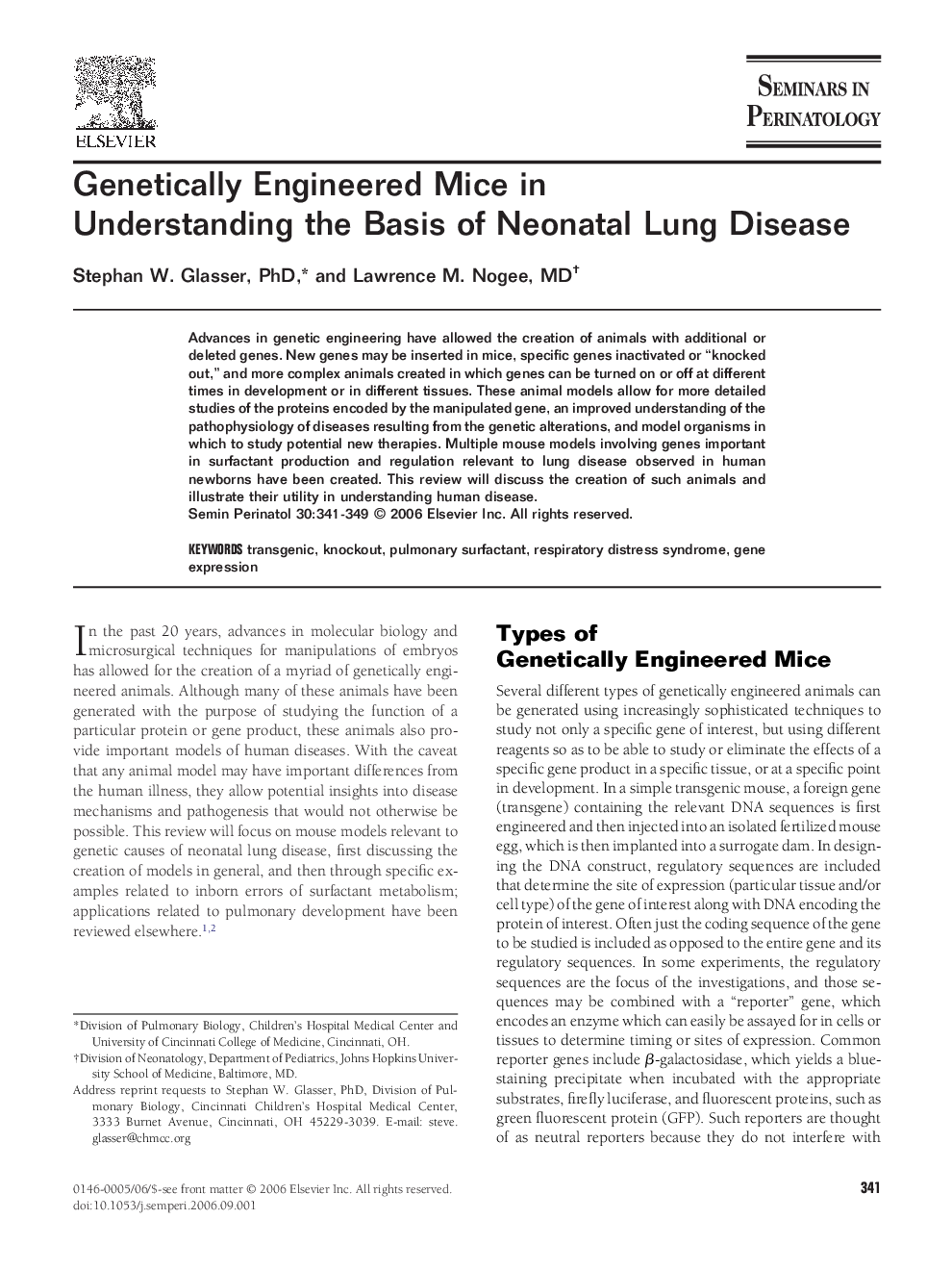| Article ID | Journal | Published Year | Pages | File Type |
|---|---|---|---|---|
| 3837136 | Seminars in Perinatology | 2006 | 9 Pages |
Advances in genetic engineering have allowed the creation of animals with additional or deleted genes. New genes may be inserted in mice, specific genes inactivated or “knocked out,” and more complex animals created in which genes can be turned on or off at different times in development or in different tissues. These animal models allow for more detailed studies of the proteins encoded by the manipulated gene, an improved understanding of the pathophysiology of diseases resulting from the genetic alterations, and model organisms in which to study potential new therapies. Multiple mouse models involving genes important in surfactant production and regulation relevant to lung disease observed in human newborns have been created. This review will discuss the creation of such animals and illustrate their utility in understanding human disease.
